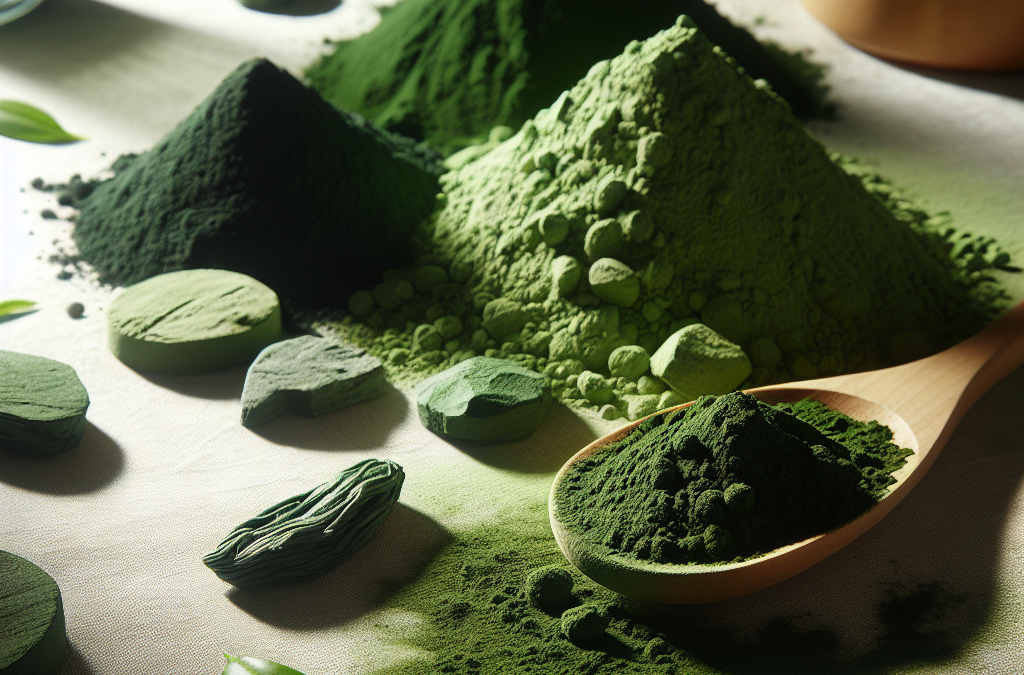Introduction
In the health-conscious world of 2025, certified organic greens have taken center stage among superfoods. These greens are cultivated without synthetic fertilizers or pesticides, making them safer and more sustainable choices for both consumers and the environment. Whether youâre a foodie, a fitness enthusiast, or someone looking to boost your daily nutrient intake, embracing certified organic greens is a smart move. In this guide, Iâll walk you through the top 10 effective certified organic greens for 2025, highlighting their health benefits, cultivation tips, and how to incorporate them into your diet.
1. Spirulina – The Superfood Green
What Is Spirulina?
Spirulina is a blue-green microalga renowned for its high protein content and rich nutrient profile. Certified organic spirulina is cultivated in controlled environments without synthetic chemicals, making it a favorite among health aficionados. Its vibrant color and potent amino acid profile make it a true superfood green for 2025.
From smoothie bowls to supplementation capsules, spirulina offers a versatile way to boost your daily greens intake. Itâs especially valued for its antioxidant properties, which fight free radicals and support overall health.
Health Benefits
Research shows that consuming certified organic spirulina can improve immune function, reduce inflammation, and enhance energy levels. It contains essential nutrients like B12, iron, and gamma-linolenic acid (GLA). For vegetarians and vegans, spirulina is a valuable plant-based source of protein and B12.
In 2025, the trend toward sustainable superfoods makes spirulina even more popular, as it requires minimal land and water resources compared to traditional greens. Incorporating spirulina into your diet can be as simple as adding it to smoothies or mixing into salad dressings.
2. Kale – The Nutritional Powerhouse
Why Choose Certified Organic Kale?
Kale remains one of the most popular greens globally, and in 2025, certified organic kale is prized for its purity and nutrient density. Organic farming methods result in greens that are free from pesticides, which is especially important given kaleâs thick leaves and tendency to absorb chemicals from conventional farming.
Kale is rich in vitamins A, C, and K, as well as minerals like calcium and magnesium. Itâs also high in antioxidants that promote cellular health.
Ways to Incorporate Kale
You can enjoy certified organic kale raw in salads, blended into smoothies, or cooked in stir-fries. Massaged kale salads are a popular trend that make it easier to digest while preserving its nutrients.
Pro tip: Use organic kale in your meal prep to maximize health benefits and ensure you’re minimizing pesticide exposure in 2025. Organic kale is especially recommended for children and pregnant women due to its chemical-free cultivation.
3. Microgreens – Tiny but Mighty
The Rise of Microgreens
Microgreens are young vegetable greens harvested just after the first true leaves develop. Certified organic microgreens like radish, basil, and sunflower microgreens pack a punch in nutrients per serving. Due to their small size, microgreens are quick to grow, making them a sustainable and trendy choice in 2025.
They can be added to salads, sandwiches, or used as garnishes, offering vibrant flavor and color along with a load of vitamins and minerals.
Growing Microgreens at Home
Growing your own certified organic microgreens is easier than you think. A simple setup with organic soil or coconut coir and a sunny window is enough to start. Harvesting microgreens weekly can supply fresh greens to your family year-round while reducing reliance on store-bought options.
Plus, supporting certified organic microgreen producers ensures chemical-free greens that contribute to a healthier diet and environment in 2025.
4. Swiss Chard – Versatile and Rich
Why Opt for Organic Swiss Chard?
Swiss chard is a colorful, leafy green with a slightly bitter, earthy flavor. Certified organic varieties are better for your health and taste buds. Chard is rich in vitamins A, C, and E, along with potassium and magnesium, which are vital for heart and muscle function.
Organic farming practices help preserve soil health, ensuring each leaf is nutrient-dense without residual pesticides.
Cooking With Swiss Chard
This versatile green can be sautéed, steamed, or added raw to salads. Its stalks can be pickled or cooked separately for a crunchy contrast.
In 2025, sustainable growers focus on enhancing flavor profiles through organic methods, making certified organic chard a must-have for health-conscious consumers.
5. Arugula – Peppery and Fresh
Choosing Organic Arugula
Arugula offers a distinct spicy flavor and is packed with antioxidants, vitamins, and minerals. Certified organic arugula minimizes pesticide residues, which is especially important given its delicate leaves often sprayed conventionally.
Its quick harvest time makes it a favorite for fresh salads, pizzas, and pesto recipes in 2025.
Nutrition and Culinary Uses
Arugula’s high vitamin C content boosts your immune health, and its flavor adds a punch to any dish. Growing your own certified organic arugula is simple; just sow seeds in organic soil and harvest within 3-4 weeks.
Huge Discount on the Best Certified Organic Nutrient Dense Supplement!
Next time you shop, look for certified organic arugula to enjoy maximum freshness and health benefits in 2025.
6. Malabar Spinach (Mangold) – Tropical Green Power
Breaking Down Malabar Spinach
Though not true spinach, Malabar spinach is a robust, organic green thriving in warm climates. Certified organic mangold is rich in iron, calcium, and vitamins A and C. Itâs often used in Indian and Southeast Asian dishes.
Its succulent leaves and stems add nutritional value and visual appeal to salads and stir-fries.
Growing Tips for 2025
Malabar spinach prefers warm, humid environments. Organic cultivation minimizes chemical use, ensuring a sustainable green for your diet. Growing your own organic mangold can be rewarding and cost-effective, providing fresh greens with each harvest.
7. Beet Greens – Sweet and Nutritious
Nutrition Packed into Beet Greens
Often discarded, beet greens are an overlooked superfood. Certified organic beet greens contain high levels of calcium, iron, and antioxidants. They have a slightly sweet, earthy flavor similar to chard.
Incorporating beet greens into your meals boosts nutrition and reduces waste. Use them raw in salads or sautéed as a side dish.
Growing Organic Beets and Greens
Growing your own certified organic beets and greens ensures chemical-free, fresh harvests. Beets thrive in well-drained soil, and harvesting both the root and greens maximizes your cropâs value in 2025.
8. Spirulina – The Sustainable Protein
Sustainable and Nutritious
As sustainability becomes more critical in 2025, certified organic spirulina stands out as an eco-friendly source of complete protein. Grown in controlled environments like algae tanks, it uses significantly less land and water than traditional greens.
The high protein content (about 60-70% by dry weight) makes it ideal for vegans, vegetarians, and athletes seeking plant-based nutrition.
Usage and Benefits
Mix organic spirulina powder into smoothies, energy bars, or juices. Its earthy flavor pairs well with citrus or mild fruits.
Supporting the organic aquaculture of spirulina aligns with eco-conscious lifestyles prevalent in 2025.
9. Wheatgrass – The Immune Booster
Why Choose Certified Organic Wheatgrass?
Wheatgrass is a popular shot in wellness routines, packed with chlorophyll, vitamins, and antioxidants. Certified organic wheatgrass is grown without insecticides, pesticides, or synthetic fertilizers, ensuring purity and safety.
Sustainable cultivation enhances soil health, attracting health-conscious consumers in 2025.
Growing and Juicing
Growing wheatgrass at home with organic seeds and soil allows you to harvest fresh greens regularly. Consuming wheatgrass juice can invigorate your immune system and improve digestion.
Batch cultivation using organic methods guarantees a high-quality, chemical-free product that supports overall wellness in 2025.
10. Rocket (Arugula) – The Hot Pepper Green
Distinctive Flavor and Organic Quality
Rocket, also known as arugula, is celebrated for its spicy, peppery flavor. Certified organic rocket ensures that you’re consuming greens free from synthetic chemicals, especially important as demand for clean, healthy foods rises in 2025.
It is widely used in salads, pestos, and as a garnish, adding a fiery kick to dishes.
Growing Tips for Certified Organic Rocket
Rocket grows quickly and prefers cool weather; organic seeds with untreated status are essential for chemical-free cultivation. Regular harvesting encourages new growth and maintains flavor intensity.
Frequently Asked Questions about Certified Organic Greens in 2025
- 1. What are the main benefits of choosing certified organic greens?
- Certified organic greens are grown without synthetic pesticides or fertilizers, making them safer to consume. They retain higher nutrient levels, support sustainable farming practices, and reduce environmental impact. In 2025, increased consumer awareness emphasizes healthier, cleaner food choices.
- 2. How can I identify genuine certified organic greens?
- Look for reputable certification labels such as USDA Organic or equivalent regional certifiers. Check the packaging for certification symbols, and buy from trusted suppliers who specify organic standards.
- 3. Are organic greens more expensive?
- They can be slightly more expensive due to organic farming practices and certification costs, but the health and environmental benefits often outweigh the price difference. Buying in season and local can help reduce costs.
- 4. How do certified organic greens impact health?
- They provide higher levels of vitamins, minerals, and antioxidants, which can boost immune health, improve digestion, and reduce exposure to harmful chemicals. In 2025, the focus on organic greens aligns with global health trends.
- 5. Why is certified organic spirulina considered one of the most effective greens in 2025?
- Because spirulina offers a concentrated source of protein, antioxidants, and essential nutrients while being environmentally sustainable. Its cultivation consumes fewer resources, making it a top choice for eco-conscious consumers looking for effective superfoods in 2025.
Conclusion
As we look towards 2025, choosing certified organic greens remains a vital step toward optimizing health, supporting sustainable agriculture, and minimizing exposure to harmful chemicals. This guide highlighted ten of the most effective certified organic greens to incorporate into your diet this yearâeach offering unique benefits and versatility. Whether youâre including spirulina in your smoothies or growing your own microgreens at home, making organic choices ensures you nourish your body and the planet. Stay informed, choose wisely, and enjoy the abundant health benefits of certified organic greens in 2025 and beyond!





